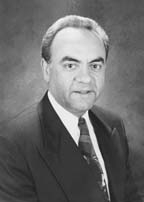 |
|||||||||||||||||||||||||||||||||||||||||||||
|
LGC's Multimedia Home Page. Página Inicial del CGL. |
EDITORIAL
It was recently reported by the United States Bureau of the Census that Latinos constitute the largest minority group in the country - five years earlier than projected. This population is growing at an unprecedented rate of 5.7% each year. Part of this expansion is an increasing population of Latino elderly. In 1970, there were 50,000 Latinos age 60(+) in New York City, and in 2000; this segment grew fourfold to 210,000. Not only is the Hispanic elderly population the most rapidly growing segment in the city, it is also the neediest. According to the New York City Department for the Aging, two thirds of all Hispanic elderly live below the poverty line, many of which live in isolation and suffer from malnutrition. The Latino Gerontological Center (LGC) is working relentlessly to improve the quality of life of these seniors. It conducted 10 Community Education Seminars throughout New York City that were specifically designed to help the elderly cope with feelings of depression resulting from the terrorist attacks in New York. LGC testified on two occasions before the Committee on Aging of the New York City Council on behalf of the Latino elderly. LCG further supported the rent freeze for the living quarters of the underprivileged elderly. In addition, the Latino Gerontological Center articulated the urgent need for more nutritional programs targeting the fastest growing Latino elderly. This was of particular consequence given that two out of three Latino elderly retire into poverty.Internationally, LGC shared its knowledge in several conferences held in Chile, Paraguay and Mexico. LGC is working in conjunction with the University of Nuevo Leon at Monterrey, Mexico on a soon to be published book that will contain the principal works from the LGC's Inter-American Conference on Gerontology which took place in México, Costa Rica, Argentina and Puerto Rico during the years 2000 and 2001.Also in 2002, LGC published two issues of The Community Star, which was distributed in New York, and Washington, D.C., USA; Monterrey, México; and Asunción, Paraguay. In June 2002, LGC held its Tenth Anniversary Golden Age Awards recognizing leaders that have served the Latino elderly with distinction.On Thanksgiving Day, LGC opened 10 community centers in New York, New Jersey, Washington, D.C. and Florida, to provide a traditional Thanksgiving meal to thousands of seniors without families.On Christmas, thanks to the workers of Altria Group Inc., LGC provided gifts to the elderly in East Harlem, New York. The Latino Gerontological Center begins 2003 with a renewed commitment towards improving the quality of life for the Hispanic elderly. This is a significant undertaking, which requires many partners. Together, as public and private entities, as well as individuals, we share a belief in the social pact to help our Latino elderly who have already contributed their talents and energies before us to build our society.The Latino Gerontological Center will continue leading the way on addressing the needs of our cherished Latino elderly population. EDITORIAL
La communidad hispana constituye el grupo minoritario más grande en Estados Unidos, cinco años antes de lo proyectado. La comunidad latino continúa creciendo un 5.7% al año, e incluídos en este crecimiento están los ancianos, quienes tienen una variedad de necesidades especiales. El segmento compuesto por las personas mayores latinas no es solamente el de más rápido crecimiento, sino el más pobre. En 1970 habían 50.000 latinos de 60 años y más en la Ciudad de Nueva York, y en el año 2.000 este segmento aumentó a 210.000. Según el Departamento para Personas Mayores de NYC, dos de cada tres ancianos latinos viven debajo de los niveles de pobreza. Muchos viven solos, y sufren de sub nutrición. El Centro Gerontológico Latino (CGL) trabaja sin cesar para mejorar la calidad de vida de estos ancianos. Algunas de las actividades realizadas con este objeto incluyen diez seminarios gratuitos de educación comunitaria en diversos sectores de la Ciudad de Nueva York, los que fueron específicamente diseñados para ayudar a los ancianos que se sentían deprimidos por efecto de los ataques terroristas del 11 de Septiembre. En nombre de los ancianos hispanos, testificamos en dos ocasiones ante el Comité sobre Personas Mayores del Consejo Municipal de Nueva York. Apoyamos un proyecto de control de renta para los ancianos pobres. Además, el CGL expuso la necesidad de más programas de nutrición para los hispanos mayores. La comunidad latina sigue creciendo y no hay suficientes programas que vayan a la par con ese crecimiento. Internacionalmente, el CGL ha compartido su conocimiento en reuniones realizadas en Chile, Paraguay y México. El CGL continúa trabajando con La Universidad Autónoma de Nuevo León en Monterrey en un libro que contiene las principales ponencias de la II Conferencia Interamericana sobre Gerontología llevada a cabo en México, Costa Rica, Argentina y Puerto Rico durante los años 2000 y 2001.También en el año 2002, el CGL publicó dos ediciones de “La Estrella Comunitaria”, periódico que se distribuyó en Nueva York, Washington, D.C., Monterrey, México, y Asunción Paraguay.En Junio de 2002, en una brillante ceremonia, el CGL entregó por décima vez sus premios "Edad Dorada”.Para el Día de Acción de Gracias, el CGL abrió diez centros comunitarios en Nueva York, Nueva Jersey, Washington D.C. y Florida para ofrecer la tradicional Cena para miles de ancianos sin familia. Para la Navidad, el CGL junto a los trabajadores del Grupo Altria Inc., entregó 200 regalos a los ancianos del East Harlem, Nueva York.El Centro Gerontológico Latino comenzó el 2003 con un renovado compromiso para mejorar la calidad de vida de los ancianos latinos; un objetivo obtenible si trabajamos juntos las organizaciones privadas, públicas e individuos que creen en el pacto social de ayudar a aquellos que contribuyeron, a su tiempo, con sus talentos y energías por el bien de toda la sociedad. El Centro Gerontológico Latino continuará liderando el camino. Volver arriba |
|
|||||||||||||||||||||||||||||||||||||||||||
Please direct any comments to:
info@gerolatino.org
Designed & Hosted by Gerolatino Publications ©2003
